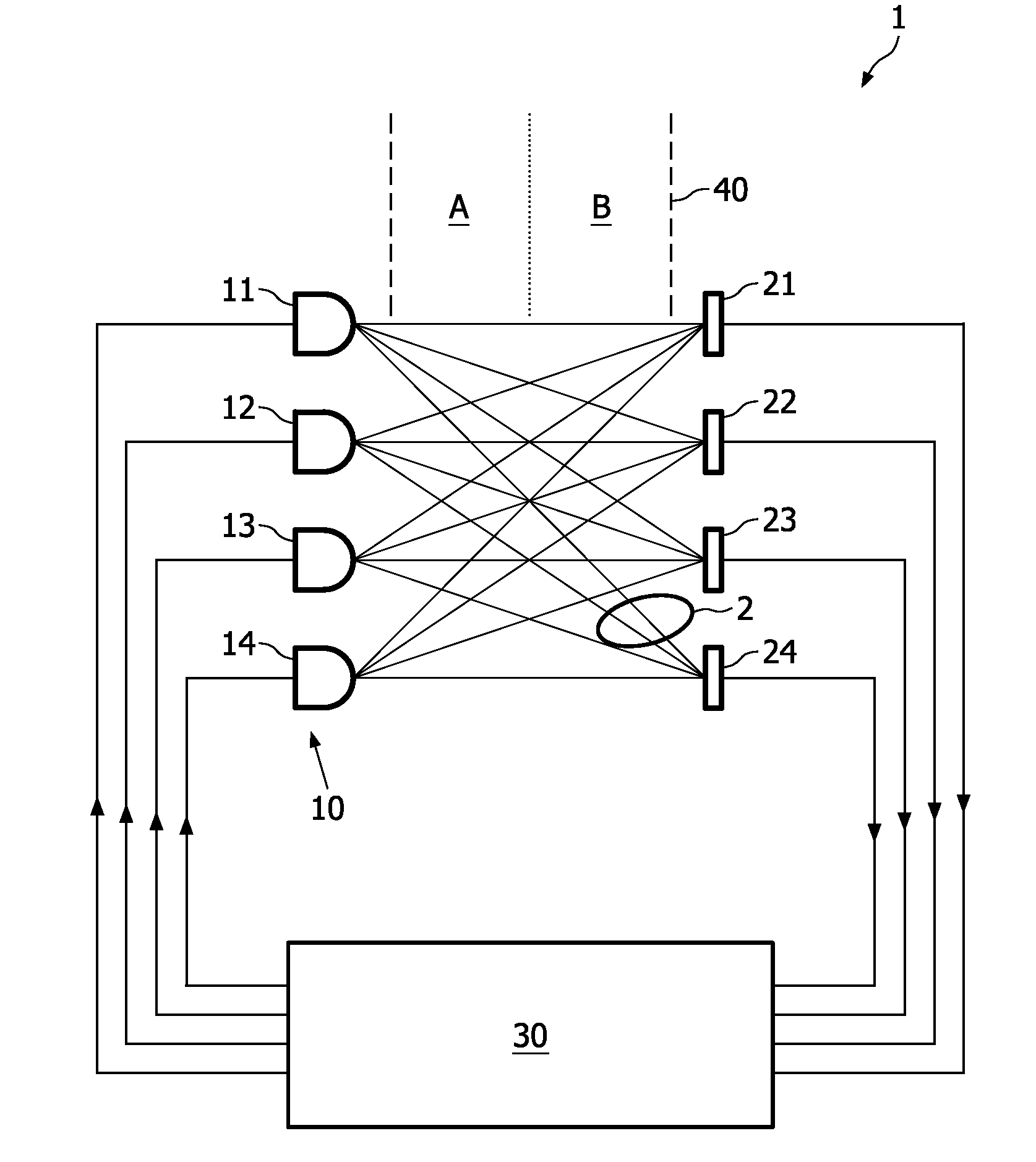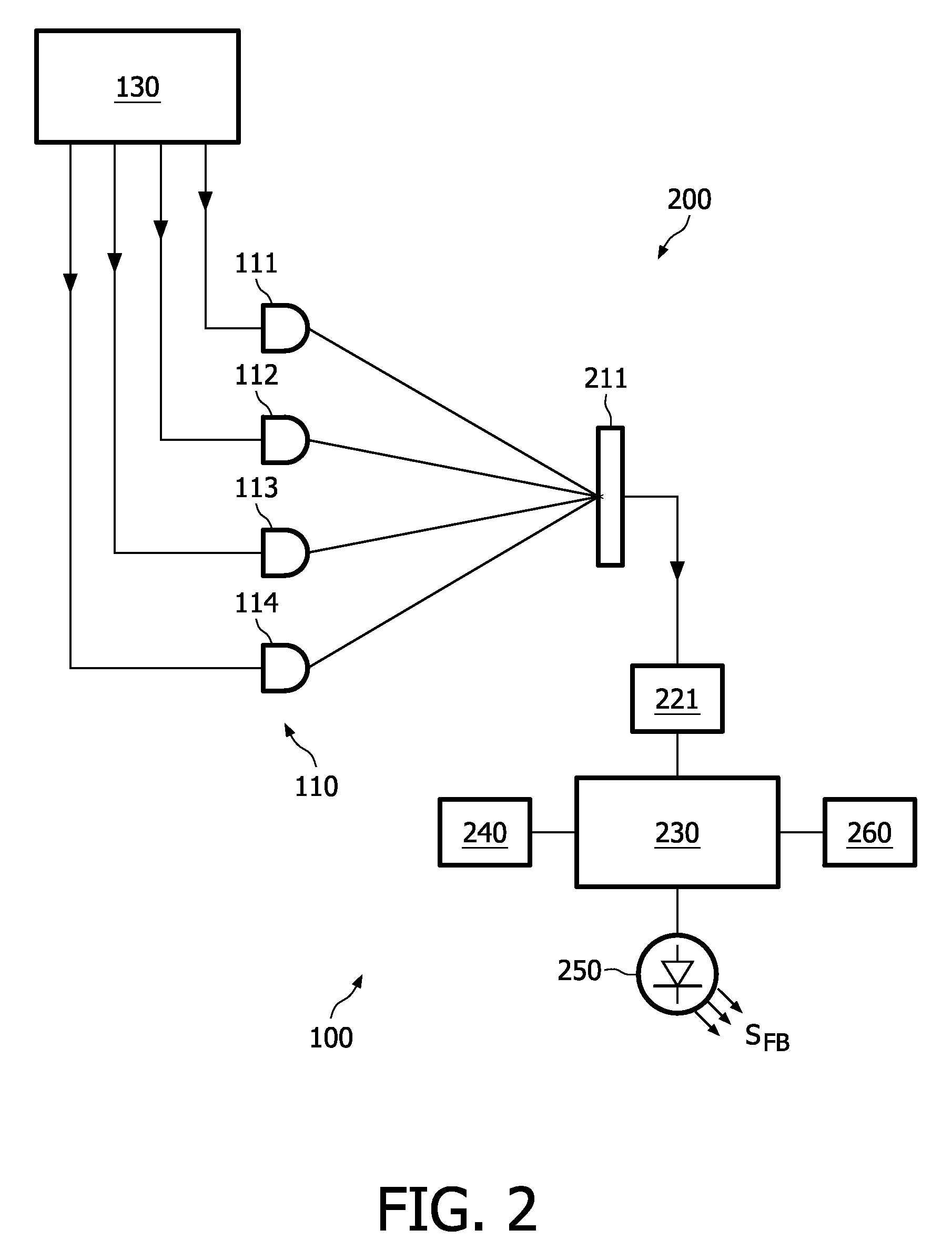Line-of-sight optical detection system, and communication system
a communication system and optical detection technology, applied in the field of line-of-sight optical detection system, can solve the problems of light cost, add to the cost of the detection system, light source and light detector, etc., and achieve the effect of relatively low cost of the communication system
- Summary
- Abstract
- Description
- Claims
- Application Information
AI Technical Summary
Benefits of technology
Problems solved by technology
Method used
Image
Examples
Embodiment Construction
[0029]FIG. 1 schematically shows a line-of-sight optical detection system 1. This system 1 comprises a plurality of LEDs 11, 12, 13, 14; the number of LEDs shown in FIG. 1 is equal to four, but the system may have a different number of LEDs. The system further comprises a plurality of light detectors 21, 22, 23, 24, suitably phototransistors; the number of detectors shown in FIG. 1 is equal to four, but the system may have a different number of detectors. The detectors have their outputs coupled to a controller 30, which may be a suitably programmed microprocessor, for instance.
[0030]The LEDs are part of an illumination system 10 for illuminating a room, under control of the controller 30, which controls the LEDs such that they emit CDMA encoded light. Each LED is coded in a different way. Particularly, each LED emits an identification code. The physical positioning of the LEDs may be regular or irregular; in the figure, they are lined up at regular intervals, but this is not essent...
PUM
 Login to View More
Login to View More Abstract
Description
Claims
Application Information
 Login to View More
Login to View More - R&D
- Intellectual Property
- Life Sciences
- Materials
- Tech Scout
- Unparalleled Data Quality
- Higher Quality Content
- 60% Fewer Hallucinations
Browse by: Latest US Patents, China's latest patents, Technical Efficacy Thesaurus, Application Domain, Technology Topic, Popular Technical Reports.
© 2025 PatSnap. All rights reserved.Legal|Privacy policy|Modern Slavery Act Transparency Statement|Sitemap|About US| Contact US: help@patsnap.com



